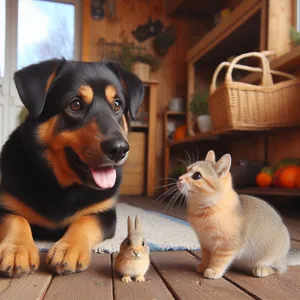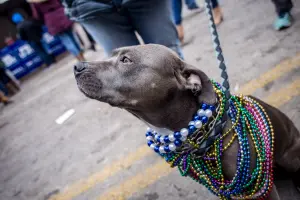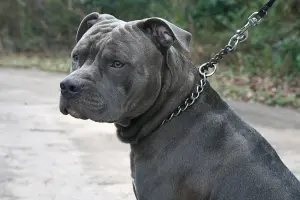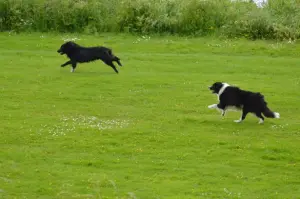Bathing your furry friend can often feel like a daunting task, but it’s an essential part of maintaining their health and happiness.
With so many different breeds, fur types, and lifestyles, finding the right bathing routine for your dog can be a bit of a puzzle. Too frequent baths can strip their coat of natural oils, leading to dryness and skin issues, while not bathing them enough can result in odors and dirt buildup. So, how do you strike the perfect balance? In this ultimate guide to dog bathing, we’ll explore the factors that influence how often your dog should be bathed, including their breed, activity level, and skin condition. Packed with expert tips and insights, this comprehensive resource will empower you to create a bathing schedule that keeps your pup clean, comfortable, and healthy. Whether you’re a new pet parent or a seasoned dog owner, you’ll discover everything you need to know to make bath time a breeze for both you and your beloved companion!
1. Introduction: The Importance of Regular Baths for Dogs

When it comes to dog ownership, few responsibilities are as vital yet overlooked as regular bathing. Just like humans, dogs require a clean environment to thrive, and a proper bath is a cornerstone of their hygiene and overall well-being. While it might seem like just an indulgent ritual or a chore to tackle, bathing your furry friend plays a crucial role in maintaining their health, comfort, and happiness.
Regular baths help remove dirt, debris, and allergens that can accumulate in your dog’s coat, providing relief from skin irritations and preventing infections. Many dog breeds are prone to certain skin conditions, and a well-timed wash can help manage these issues effectively. Beyond physical cleanliness, bathing is an opportunity to inspect your dog for any unusual lumps, bumps, or skin irritations that may require a vet’s attention.
Moreover, baths can significantly reduce odors that are common in dogs, especially those with long or thick coats. This not only keeps your home smelling fresh but also enhances your relationship with your pet. Dogs are social creatures, and a clean dog is often a happier dog, leading to more quality time together without the worry of unpleasant smells.
In this ultimate guide, we will delve into the nuances of dog bathing schedules, exploring factors such as breed, activity level, and skin type to help you determine how often your dog should enjoy a bath. Understanding the importance of regular baths is the first step in ensuring your canine companion leads a happy, healthy life, so let’s explore the best practices for keeping your dog clean and content.
2. Factors Affecting Bathing Frequency
Determining how often to give your dog a bath isn’t a one-size-fits-all decision; it hinges on several factors that can significantly influence your dog’s bathing frequency. Here are the key elements to consider:
**1. Breed and Coat Type**: The breed of your dog plays a crucial role in how often they need a bath. For instance, dogs with long, thick, or curly coats, such as Poodles or Golden Retrievers, may require more frequent grooming and bathing to prevent matting and to keep their coats clean. On the other hand, short-haired breeds like Dachshunds or Beagles may only need a bath every few months, as their coats shed dirt more easily.
**2. Activity Level**: Is your dog an adventurous explorer or a laid-back couch potato? A highly active dog that loves to romp through mud puddles, roll in the grass, or swim in lakes will likely need more baths than a dog that prefers lounging indoors. If your furry friend spends a significant amount of time outdoors or tends to get dirty easily, you might find yourself reaching for the shampoo more often.
**3. Skin Condition**: Dogs with sensitive skin or specific skin conditions may require a specialized bathing routine. Certain breeds are prone to skin issues that necessitate medicated baths at regular intervals. If your dog has allergies or skin irritation, consult with your veterinarian about the best bathing frequency and products to use.
**4. Environmental Factors**: The environment in which your dog lives can also impact bathing frequency. Dogs that live in dusty, sandy, or muddy areas may accumulate dirt and debris more quickly, necessitating more frequent baths. Additionally, if your dog spends a lot of time in the water, whether at the beach or a dog-friendly lake, you might need to bathe them more often to remove salt or chlorine.
**5. Personal Preference**: Lastly, your preference and your dog’s tolerance for baths matter. Some dogs absolutely love splashing around, while others might dread bath time. Finding a balance that keeps your pet comfortable while maintaining their hygiene is key.
By considering these factors, you can create a personalized bathing schedule that keeps your dog healthy, happy, and looking their best. Remember, the goal is not just to keep them clean but to ensure that their bathing routine enhances their overall well-being.
– Dog Breed and Coat Type
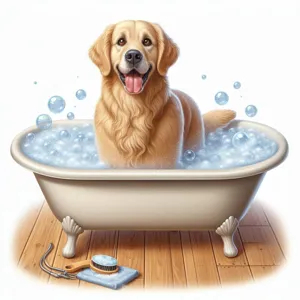
When it comes to determining how often your dog should be bathed, one of the most critical factors to consider is their breed and coat type. Different breeds have distinct grooming needs that correlate with their unique fur characteristics, and understanding these can help you maintain your dog’s hygiene and health effectively.
**Short-Haired Breeds**: For dogs like Beagles, Boxers, or Dachshunds, a bath every few months is generally sufficient. Their short, sleek coats don’t trap dirt and debris as readily, which means they can often go longer between baths. However, regular brushing—every week or so—helps remove loose hair and skin flakes, keeping their coat shiny and healthy.
**Long-Haired Breeds**: Breeds such as Golden Retrievers, Shih Tzus, and Collies require more frequent bathing, usually every 4 to 6 weeks. Their beautiful, flowing coats can easily collect dirt, oils, and matting, which can lead to skin irritations if not addressed. Regular baths, combined with thorough brushing, help keep their fur manageable and reduce the risk of painful tangles.
**Curly and Wavy Coats**: Breeds like Poodles and Portuguese Water Dogs possess unique coat types that require special attention. These dogs benefit from baths every 3 to 4 weeks, as their curls can trap dirt and moisture, leading to odors and potential skin issues. Regular grooming is crucial to prevent matting, and using a gentle, moisturizing shampoo can help maintain coat health.
**Double-Coated Breeds**: Breeds such as Huskies, German Shepherds, and Labrador Retrievers have a thick double coat that sheds seasonally. While they may not need frequent baths—typically every 2 to 3 months—brushing should be done regularly to manage shedding and keep their coat in top condition. When these breeds do bathe, using a high-quality shampoo designed for their coat type can help maintain its natural oils.
**Skin Conditions and Allergies**: Regardless of breed, if your dog suffers from skin conditions or allergies, you may need to adjust their bathing schedule. Your veterinarian can recommend specific bathing routines and products to alleviate symptoms and maintain skin health.
By considering your dog’s breed and coat type, you can create a bathing schedule that meets their grooming needs while ensuring their comfort and well-being. Keeping these factors in mind will help you find that perfect balance, ensuring your furry friend stays clean, healthy, and happy.
– Age and Health Considerations
When determining how often to bathe your dog, age and health considerations play a crucial role. Puppies, for instance, have sensitive skin and a natural protective coat that can be disrupted by frequent bathing. Generally, it’s advised to bathe them only when necessary—perhaps after playtime in the mud or an unfortunate encounter with a skunk. Their skin is still developing, so using mild, puppy-specific shampoos and limiting baths to once every few months can help maintain the natural oils that keep their coat healthy.
On the other hand, senior dogs may require more frequent baths due to changes in their skin and coat health. As dogs age, they can develop skin conditions, become less active in grooming themselves, or experience incontinence, all of which can necessitate more regular washing. Be gentle during bath time, using warm water and a soft brush to help soothe any discomfort they may have. Always keep an eye out for signs of skin irritation or unusual odors, as these could indicate underlying health issues that warrant a trip to the veterinarian.
For dogs with specific health concerns, such as allergies, skin infections, or other dermatological issues, the bathing schedule may need to be tailored further. Your vet can recommend medicated shampoos and an appropriate bathing frequency that aligns with your dog’s unique needs. Keeping a close watch on your dog’s coat and skin condition will help ensure that you strike the right balance, allowing them to stay clean and comfortable while promoting their overall health and well-being.
– Activity Level and Lifestyle

When it comes to determining how often to bathe your dog, one of the key factors to consider is their activity level and lifestyle. Dogs that lead an active life—frequently running, playing, and exploring the great outdoors—are likely to accumulate dirt, mud, and odors more quickly than their more sedentary counterparts. If your furry friend is a spirited adventurer, you might find yourself needing to schedule baths more frequently to keep their coat clean and fresh.
For instance, if your dog enjoys long hikes in the woods or romps at the beach, it’s not uncommon for them to return home covered in grime. In such cases, a bath every 2 to 4 weeks might be ideal to remove any accumulated debris and prevent skin issues caused by trapped dirt and moisture. On the other hand, for dogs who enjoy a calmer lifestyle—think couch companions and low-energy lapdogs—a bath every 6 to 8 weeks might suffice, as they are less likely to get dirty.
Additionally, consider the breed and coat type: long-haired dogs or those with dense fur may require more frequent bathing and grooming to prevent matting and to maintain a healthy coat. Meanwhile, short-haired breeds may only need a bath when they start to smell or if they’ve rolled in something particularly unpleasant.
Ultimately, tailoring your bathing routine to fit your dog’s unique lifestyle will not only keep them clean but also contribute to their overall well-being. Regular grooming, coupled with the right bathing schedule, can help ensure that your dog’s coat remains healthy, vibrant, and free of irritants.
3. General Guidelines for Bathing Frequency
When it comes to determining how often you should bathe your dog, there are several general guidelines to keep in mind. While every dog is unique, these foundational principles can help you establish a bathing routine that keeps your furry friend clean, comfortable, and healthy.
**Coat Type Matters**: The type of coat your dog has plays a significant role in how often they should be bathed. Breeds with long, flowing fur, like Golden Retrievers or Afghan Hounds, may require more frequent baths to prevent matting and tangling. In contrast, short-haired breeds, such as Beagles or Boxers, often need less frequent bathing, perhaps every 8-12 weeks.
**Activity Level**: Consider your dog’s daily activities. An active dog that loves to romp through the dirt or splash in puddles may need more frequent baths than a couch potato. If your pup enjoys outdoor adventures, you might find yourself bathing them every few weeks to keep them fresh and odor-free.
**Skin Health**: Dogs with skin conditions or allergies may need special attention when it comes to bathing frequency. Consult with your veterinarian to determine the best bathing schedule and products to use for your dog’s specific skin needs. Some dogs may benefit from medicated shampoos and more regular baths, while others might require a gentler approach.
**Seasonal Changes**: Don’t forget to adjust your bathing routine based on the seasons. During warmer months, dogs may appreciate more frequent baths to wash away dirt and sweat, while in colder months, it’s often best to bathe them less frequently to prevent dry skin.
**Odor and Dirt Levels**: Finally, trust your nose! If your dog starts to develop an odor or has visible dirt buildup, it’s time for a bath regardless of the timeline you’ve set. Regular grooming and brushing can also help manage dirt and loose fur between baths, extending the time between washings.
By considering these general guidelines, you can tailor a bathing schedule that suits your dog’s specific needs, ensuring they stay clean and comfortable without stripping their skin and coat of natural oils. Ultimately, a well-groomed dog is a happy dog!
– Puppies vs. Adult Dogs

When it comes to bathing, the age of your dog plays a significant role in determining how often they should be pampered with a scrub and rinse. Puppies and adult dogs have different needs, sensitivities, and lifestyles that influence their bathing schedules.
**Puppies** are often cute bundles of energy, exploring their world with an insatiable curiosity. While they may not have the same level of dirt accumulation as their adult counterparts, they can find themselves in a variety of messes—muddy puddles, sticky grass, and even some unexpected surprises! Due to their delicate skin and developing immune systems, it’s essential to approach puppy bathing with care. Most veterinarians recommend bathing puppies every 3 to 4 weeks, using a gentle, pet-safe shampoo that doesn’t strip their coat of essential oils. This regular bathing helps familiarize them with the process, making future baths easier and more enjoyable as they grow.
On the other hand, **adult dogs** typically require a different bathing frequency. Depending on their breed, lifestyle, and coat type, adult dogs may only need a bath once a month or even every couple of months. Dogs that spend more time outdoors, roll in the dirt, or have oily coats may need to be bathed more frequently. It’s crucial to observe your dog’s coat and skin condition; if they start to smell or their fur appears greasy, it’s probably time for a bath. For breeds with longer hair, regular brushing can help reduce the need for frequent baths by controlling tangles and dirt accumulation.
Overall, understanding the differences between puppies and adult dogs can help you establish a suitable bathing routine that keeps your furry friends clean, comfortable, and happy. Whether your dog is a playful puppy or a wise adult, finding the right balance will ensure they feel their best while promoting healthy skin and a shiny coat.
– Indoor vs. Outdoor Dogs
When it comes to determining how often to bathe your dog, one of the most significant factors to consider is whether your furry friend is an indoor or outdoor dog. each environment presents unique challenges and influences on your dog’s hygiene needs.
**Indoor Dogs:**
For dogs that primarily reside indoors, bathing might be required less frequently, typically every 4 to 6 weeks. These dogs usually enjoy a controlled environment free from the dirt and grime of the great outdoors. However, they can still accumulate dust, dander, and odors from household activities. Regular brushing is essential for indoor pups to minimize shedding and keep their coat healthy and clean. Pay attention to specific factors such as breed, coat type, and overall health. Long-haired breeds might need more frequent grooming to prevent matting, while short-haired dogs might only need a bath if they roll in something unsavory or start to develop an odor.
**Outdoor Dogs:**
On the other hand, outdoor dogs tend to be more exposed to the elements, leading to a messier coat and potentially more frequent bathing requirements—sometimes as often as every 2 to 4 weeks. These dogs engage in playtime that often involves mud, grass, and other outdoor elements, which can lead to dirtier fur. Depending on the season and their activities, you might find yourself giving your outdoor dog a quick rinse after a particularly muddy romp or a more thorough wash after a day of exploration. Keep in mind that if your outdoor dog has a thick or water-resistant coat, you may need to balance their bathing schedule with their natural oils to avoid drying out their skin.
Ultimately, understanding your dog’s lifestyle and environment will guide you in establishing a bathing routine that promotes cleanliness without compromising their skin health. By tailoring your approach based on whether your dog spends more time indoors or outdoors, you can ensure they remain fresh, healthy, and happy.
4. Signs Your Dog Needs a Bath
Bathing your dog can often feel like a daunting task, but being in tune with your furry friend’s needs can make it much easier. Recognizing the signs that your dog needs a bath is crucial for maintaining their health and comfort. Here are some key indicators to watch for:
1. **Odor**: One of the most obvious signs that your dog is due for a wash is an unpleasant odor. If your pup starts to smell less like sunshine and more like a wet dog, it’s time for a bath. Dogs can accumulate dirt, oils, and even food particles in their fur, leading to an unmistakable scent that signals it’s time for a scrub.
2. **Dirt and Debris**: After a romp through the mud or a playful day at the park, your dog’s coat may be laden with dirt, leaves, or even grass clippings. If you notice visible dirt or debris clinging to their fur, it’s a clear sign that they could use a good bath to restore cleanliness and comfort.
3. **Skin Irritation**: Pay close attention to your dog’s skin. If you notice excessive scratching, biting, or licking, it might be time for a bath. Sometimes, dirt and allergens can irritate their skin, leading to discomfort. A thorough wash can help remove these irritants and soothe their skin, especially if you use a hypoallergenic or soothing shampoo.
4. **Greasy or Oily Fur**: Some breeds, especially those with longer or thicker coats, can develop a greasy texture over time. If your dog’s fur feels slick to the touch or looks unkempt, it’s likely time for a cleansing bath. Regular washing can help maintain a healthy coat and prevent matting.
5. **Behavior Changes**: If your dog suddenly becomes more withdrawn or appears uncomfortable, it may be a sign that they need a bath. Dogs often feel better after a wash, as it can remove irritants from their fur and give them a fresh start.
By tuning into these signs, you can create a bathing schedule that keeps your dog looking great and feeling even better. Remember, a clean dog is a happy dog, and regular baths not only enhance your pet’s appearance but also promote their overall well-being.
5. How to Bathe Your Dog: Step-by-Step Guide
Bathing your dog can be a bonding experience, but it requires careful preparation and execution to ensure it’s enjoyable for both of you. Here’s a step-by-step guide to make the process smooth and effective.
### Step 1: Gather Your Supplies
Before you start, assemble everything you’ll need. This includes dog shampoo (specifically formulated for pets), a non-slip mat to prevent slipping, towels, a brush, and a detachable showerhead or a cup for rinsing. Having everything close at hand will minimize stress for both you and your pup.
### Step 2: Choose the Right Location
Select a bathing area that suits your dog’s size and comfort level. For smaller breeds, a sink or bathtub might work best, while larger dogs may need a garden hose outside or a bathtub. Ensure the temperature of the water is lukewarm—too hot or too cold can be uncomfortable for your furry friend.
### Step 3: Brush Your Dog
Before getting them wet, brush your dog’s coat to remove loose fur and knots. This step is especially important for long-haired breeds, as it helps prevent matting and makes the bathing process easier. Plus, it’s a great way to check for any skin issues or irritations.
### Step 4: Wet Your Dog
Using the showerhead or a cup, gently wet your dog’s coat, starting from the neck down. Be cautious around the head and ears, as these areas can be sensitive. If your dog seems anxious about water, speak to them in a calming voice to help them relax.
### Step 5: Apply Shampoo
Once your dog is thoroughly wet, apply a small amount of dog shampoo, working it into a lather. Avoid getting shampoo in their eyes, ears, and mouth. Focus on the body, legs, and tail, making sure to clean any areas that tend to get dirty, such as under the belly and around the paws.
### Step 6: Rinse Thoroughly
Rinse your dog completely, ensuring that all shampoo is washed away. leftover shampoo can irritate their skin, so take your time with this step. Use the showerhead or cup again, starting from the neck and working your way down.
### Step 7: Dry Your Dog
After rinsing, gently wring out excess water from your dog’s coat. Use a towel to dry them off, especially in colder weather. If your dog tolerates it, you can also use a pet-safe blow dryer on a low setting to help speed up the drying process.
### Step 8: Reward Your Dog
Once the bath is over, reward your dog with treats, praise, or playtime. This positive reinforcement helps them associate bath time with a pleasant experience, making the next bath easier for both of you.
By following these steps, you can make bath time a stress-free and enjoyable routine for your dog, ensuring they stay clean and healthy while also deepening your bond.
6. Choosing the Right Dog Shampoo
Choosing the right dog shampoo is a crucial step in your dog bathing routine that can significantly impact your pup’s coat health and overall well-being. With a myriad of options available on the market, it’s essential to select a shampoo that caters to your dog’s specific needs.
First and foremost, consider your dog’s skin type and coat condition. If your furry friend has sensitive skin, look for a hypoallergenic shampoo that is free of fragrances, dyes, and harsh chemicals. These gentle formulas help prevent irritation and maintain the natural oils in the skin. For dogs with dry or flaky skin, a moisturizing shampoo enriched with ingredients like aloe vera or oatmeal can provide the necessary hydration and soothe discomfort.
For those with a more adventurous lifestyle—think playful pups who love to roll in mud or splash through puddles—a deep-cleaning or deodorizing shampoo might be the perfect fit. These products are designed to eliminate stubborn odors and dirt while still being safe for regular use.
If your dog has specific health concerns, such as allergies or skin conditions, it’s advisable to consult your veterinarian before making a selection. They can recommend medicated shampoos that address issues like hot spots, dermatitis, or flea and tick infestations.
Lastly, don’t forget about the power of convenience! Many shampoos now come in convenient formulas with built-in conditioners, making the bathing process quicker and easier. When selecting a shampoo, always read the label to ensure it is formulated specifically for dogs, as human shampoos can disrupt the natural pH balance of their skin.
In summary, investing a little time and care into choosing the right dog shampoo will not only enhance your dog’s bathing experience but also contribute to a healthy, shiny coat and a happy pup. Happy bathing!
7. Tips for a Stress-Free Bathing Experience
Bathing your dog should be a bonding experience rather than a battle, and with a few thoughtful strategies, you can ensure it’s stress-free for both of you. Here are some tips to make bath time a positive routine:
**1. Choose the Right Location:** Select a bathing area that your dog feels comfortable in. Whether it’s a bathtub, a shower stall, or even a backyard setup with a kiddie pool, ensure that it’s a space where your dog can feel secure. Some dogs may prefer the outdoors, while others might feel more at ease inside.
**2. Gather Your Supplies in Advance:** Before bringing your dog into the bathing area, have all your supplies at the ready. This includes dog shampoo (preferably one that’s gentle and formulated specifically for their coat type), towels, a brush, and perhaps a non-slip mat to prevent slipping. Having everything on hand will help streamline the process and reduce anxiety.
**3. Brush Before the Bath:** Giving your dog a good brush before bathing helps remove loose fur, dirt, and tangles, making the washing process easier. Plus, it’s a great way to calm your dog and help them relax before the bath.
**4. Use Lukewarm Water:** Dogs can be sensitive to temperature, so always test the water before getting started. Use lukewarm water to ensure it’s comfortable for your pup. Avoid using too much water pressure, which can startle them.
**5. Keep It Short and Sweet:** Especially for younger or more anxious dogs, keeping the bathing session brief can help alleviate stress. Focus on essential areas like the body, paws, and behind the ears, and save the full grooming for when your dog is more comfortable with the routine.
**6. Offer Treats and Praise:** Positive reinforcement can work wonders. Use treats and praise generously throughout the process to create a positive association with bathing. This encourages your dog to relax and may even make them look forward to it.
**7. Drying Off:** After the bath, gently towel-dry your dog to remove excess water. If they’re comfortable with the sound, you can also use a low-heat hairdryer. Always keep it at a distance and avoid their face to prevent any fear or discomfort.
By following these tips, bath time can transform from a dreaded chore into a pleasant routine that both you and your dog can enjoy. With patience and understanding, you can create a bathing experience that fosters trust and strengthens your bond.
8. Tools and Accessories for Successful Bathing
Bathing your dog can be a delightful bonding experience, but having the right tools and accessories at your disposal can make all the difference in ensuring a smooth and enjoyable process for both you and your furry friend. Here’s a roundup of essential items that will set you up for success and transform bath time into a stress-free ritual.
**1. High-Quality Shampoo:** Selecting the right shampoo is paramount. Look for a formula that is specifically designed for dogs, as human shampoos can be too harsh on their skin. Opt for gentle, natural ingredients that cater to your dog’s specific needs—whether they have sensitive skin, a thick coat, or a tendency to get dirty quickly. Consider a conditioner as well, especially for breeds with longer fur, to keep their coat soft and manageable.
**2. Non-Slip Bath Mat:** Dogs can be a bit wobbly on wet surfaces, making a non-slip bath mat a wise addition. This will not only help your dog feel secure in the tub but also prevent accidents from slips and falls. Choose one that is easy to clean and dries quickly to maintain hygiene.
**3. Dog Grooming Brush:** Before the bath, a good brushing is essential to remove loose hair and tangles. A grooming brush appropriate for your dog’s coat type will help keep their fur in great condition, enhancing the effectiveness of the bath and preventing mats from forming when wet.
**4. Hose or Handheld Sprayer:** Whether you’re bathing your dog indoors or outdoors, having a hose or a handheld sprayer can make rinsing much easier. Adjustable nozzles allow you to control the water pressure, ensuring a gentle rinse that won’t frighten your pet.
**5. Towels:** Keep a few absorbent towels nearby to dry your dog off after the bath. Microfiber towels are a fantastic option as they absorb water quickly and minimize shedding mess. You might also consider a drying coat, particularly for breeds that take longer to dry.
**6. Treats and Toys:** Bath time doesn’t have to be a chore! Bring along some treats or waterproof toys to keep your dog entertained and comfortable during the process. Positive reinforcement can turn bath time into something they look forward to, rather than dread.
**7. Nail Clippers and Ear Cleaning Solution:** While you have your dog in the bath, it’s a perfect opportunity to tackle other grooming tasks. Keep nail clippers and an ear cleaning solution handy to give them a complete grooming session. Just be sure to use these tools gently to avoid any discomfort.
Having these tools and accessories at your fingertips will not only streamline the bathing process but also enhance the overall experience for your dog. With the right preparation and equipment, you can make dog bathing a routine that both you and your pet will enjoy, fostering a strong bond and keeping your furry friend clean and happy!
9. Common Mistakes to Avoid When Bathing Your Dog
Bathing your dog can be a delightful bonding experience, but it can also go awry if you’re not careful. To ensure your pup enjoys the process and remains healthy, it’s crucial to avoid some common bathing blunders.
One of the most frequent mistakes is using human shampoo. While it might be tempting to reach for what’s already in your shower, human shampoos can disrupt your dog’s skin pH balance, leading to irritation and dryness. Instead, invest in a high-quality dog shampoo formulated specifically for their skin type.
Another pitfall is neglecting to brush your dog before the bath. Bathing a dirty, matted coat can make tangles worse and create a frustrating experience for both of you. Brushing out loose fur and mats beforehand not only makes washing easier but also helps remove dirt and debris.
Additionally, many pet owners underestimate the importance of water temperature. Using water that’s too hot can scald your dog’s sensitive skin, while water that’s too cold may leave them shivering and uncomfortable. Aim for lukewarm water, which is gentle and soothing for your furry friend.
Don’t forget about your dog’s ears, either. Water getting trapped in the ears can lead to infections, so be cautious when rinsing around that area. Using a cotton ball to gently block their ears while bathing can help prevent this issue.
Lastly, timing is key! Bathing your dog too frequently can strip their coat of natural oils, leading to dryness and irritation. Stick to a bathing schedule that suits your dog’s breed, activity level, and overall health. By avoiding these common mistakes, you’ll not only make bath time more enjoyable but also contribute to your dog’s overall well-being.
10. Alternatives to Traditional Baths: Wipes and Waterless Shampoo
For many dog owners, the thought of giving their furry friend a bath can evoke images of slippery floors, splashing water, and an inevitable showdown with a soggy pup. Fortunately, there are alternatives to traditional baths that can make this grooming task easier and less stressful for both you and your dog. Enter dog wipes and waterless shampoos—two convenient options that can keep your dog’s coat clean and fresh without the hassle of a full bath.
**Dog Wipes:** These handy, pre-moistened wipes are like a quick spa treatment for your canine companion. Designed specifically for pets, dog wipes are gentle, hypoallergenic, and safe for regular use. They’re perfect for cleaning muddy paws after a romp in the park, wiping down a dog that has rolled in something unpleasant, or simply giving your pooch a refreshing clean between baths. With a variety of formulas available—some infused with soothing ingredients like aloe or oatmeal—you can choose the best option for your dog’s skin type. Plus, the convenience of wipes means you can easily toss a pack in your bag for on-the-go clean-ups, making them a must-have for any dog owner.
**Waterless Shampoo:** If your dog is particularly resistant to baths or if you’re short on time, waterless or dry shampoos can be a game-changer. These innovative products come in spray or foam form, allowing you to clean your dog’s coat without the need for water. Simply apply the product according to the instructions, massage it into your dog’s fur, and then use a towel or brush to remove any excess. Waterless shampoos are great for spot cleaning and can help neutralize odors while leaving your dog’s coat looking shiny and feeling soft. Look for formulas that are specifically crafted for dogs, as they will be pH-balanced and free from harsh chemicals.
Incorporating these alternatives into your dog grooming routine can help maintain your dog’s hygiene while saving you time and effort. Whether you opt for wipes or waterless shampoo, you can keep your pup looking and smelling great between those full bathing sessions. Remember, a clean dog is a happy dog, and with these options at your disposal, keeping your furry friend fresh has never been easier!
11. Seasonal Considerations: Bathing in Different Weather
When it comes to bathing your dog, seasonal considerations play a crucial role in determining the best frequency and approach for keeping your furry friend clean and comfortable. Each season presents unique challenges and opportunities that can influence your dog’s bathing routine.
**Spring** often brings an explosion of allergens as flowers bloom and trees regain their leaves. If your dog spends a lot of time outdoors, you may find them coming back from walks covered in pollen or mud. During this time, consider bathing them more frequently to help alleviate allergies and remove any debris that might irritate their skin. Opt for a gentle, hypoallergenic shampoo to ensure their sensitive skin is cared for.
**Summer**, with its sweltering heat, can lead to increased dirt and grime, especially for dogs who love to play outdoors. Regular baths during this season not only help to keep your dog clean but also provide a refreshing respite from the heat. However, be cautious of bathing them too often, as this can strip their coat of natural oils. Instead, focus on brushing them regularly to remove loose fur and dirt, and bathe them as needed, perhaps once every couple of weeks or after particularly messy playdates.
As the **leaves fall** in **autumn**, your dog may have a new challenge: the accumulation of leaves, twigs, and even mud from rainy days. This is a great time to reassess your dog’s bathing routine. If you notice they are rolling in piles of leaves or getting muddy on walks, it might be worth scheduling a bath after those excursions. Additionally, as the weather cools, you might want to ensure that their coat remains healthy and insulated, so consider using moisturizing shampoos that won’t strip their natural oils.
Finally, in **winter**, bathing frequency may decrease as dogs tend to spend more time indoors. However, if your dog enjoys playing in the snow or if they get muddy from slush and rain, they may still require a bath. Just be mindful of the temperature—avoid bathing them with cold water in chilly weather. Instead, consider using lukewarm water and drying them thoroughly afterward to prevent them from getting cold. Also, keep in mind that winter can lead to dry skin for many dogs, so look for moisturizing shampoos that can help soothe and hydrate their skin.
By adapting your dog bathing routine to the changing seasons, you not only ensure that your pet is clean and comfortable but also promote a healthy coat and skin year-round. Remember, each dog is unique, so observe your furry friend’s needs and adjust accordingly for the best results.
12. Grooming Beyond Bathing: Brushing and Dental Care
When it comes to dog grooming, bathing is just the tip of the iceberg. To ensure that your furry friend remains healthy, happy, and looking their best, you must also prioritize brushing and dental care as essential components of their grooming routine.
Brushing your dog’s coat is not only a great way to keep their fur looking clean and shiny, but it also promotes healthy skin by distributing natural oils and reducing the risk of matting. Depending on your dog’s breed, their coat type may require different brushing techniques and frequencies. For instance, long-haired breeds, like Golden Retrievers or Shih Tzus, may need to be brushed several times a week to prevent tangles and mats, while short-haired breeds, such as Beagles or Boxers, might only need to be brushed weekly. Regular brushing sessions can also be a bonding experience between you and your pup, making it a wonderful opportunity for some extra affection and attention.
Dental care is another critical aspect of grooming that is often overlooked. Just like humans, dogs can suffer from dental issues if their teeth are not properly cared for. Plaque and tartar buildup can lead to serious health problems, including gum disease and even heart issues. To maintain your dog’s dental hygiene, aim to brush their teeth at least two to three times a week using dog-specific toothpaste. Additionally, dental chews and toys can help freshen breath and reduce plaque buildup. Regular veterinary check-ups should also include dental examinations to ensure your dog’s mouth remains healthy.
Incorporating brushing and dental care into your dog grooming routine not only enhances their appearance but also contributes significantly to their overall health and well-being. A well-groomed dog is a happy dog, and with a little time and effort, you can ensure they stay comfortable, clean, and healthy between baths. Remember, grooming is about more than just keeping up appearances; it’s an integral part of your dog’s care and happiness.
13. The Benefits of Regular Bathing for Your Dog’s Health
Regular bathing is more than just a beauty routine for your furry friend; it’s a critical component of their overall health and well-being. When you cleanse your dog’s coat, you’re not only washing away dirt and odors but also removing dead hair, dander, and allergens that can irritate their skin or exacerbate allergies. This simple act can significantly reduce the presence of these irritants in your home, creating a healthier environment for both you and your pet.
Moreover, bathing provides a unique opportunity to inspect your dog’s skin and coat closely. As you lather up, you can easily spot any unusual lumps, bumps, or skin irritations that might need veterinary attention. Regular baths can also help in the early detection of parasites like fleas and ticks, which can lead to more serious health issues if left unchecked.
Additionally, the right shampoo can work wonders for your dog’s skin condition. For dogs prone to certain skin issues, medicated shampoos can help alleviate symptoms and maintain skin health. Even for those without specific issues, a good wash can promote a shiny coat and healthy skin, keeping your dog looking and feeling their best.
Finally, bathing can be a bonding experience between you and your dog. The gentle scrubbing and soothing water can help calm anxious pups, making it a wonderful time for affection and trust-building. With all these benefits in mind, establishing a regular bathing routine can contribute significantly to your dog’s health, happiness, and overall quality of life.
14. Frequently Asked Questions About Dog Bathing
When it comes to dog bathing, pet owners often have a myriad of questions that swirl around their minds, reflecting their desire to provide the best care for their furry companions. Understanding the nuances of dog bathing can help you maintain your dog’s health and happiness, and we’re here to clarify some of the most commonly asked questions.
**How often should I bathe my dog?**
The answer to this question can vary significantly based on your dog’s breed, coat type, and lifestyle. Generally, dogs with short coats may only need a bath every few months, while those with longer hair or who spend a lot of time outdoors might require more frequent baths. Always consider your dog’s specific needs and consult your veterinarian for personalized advice.
**Is it safe to bathe my dog too often?**
Absolutely! Overbathing can strip your dog’s skin of its natural oils, leading to dryness and irritation. This is especially true for breeds with sensitive skin or those prone to allergies. Stick to a bathing routine that suits your dog’s unique requirements, and remember: less can often be more.
**What kind of shampoo should I use?**
Choosing the right shampoo is crucial. Always opt for a product specifically formulated for dogs, as human shampoos can disrupt their skin’s pH balance. Look for gentle, hypoallergenic formulas if your dog has sensitive skin, and consider natural or organic options for a more eco-friendly approach.
**Can I bathe my dog outside?**
Absolutely! Bathing your dog outside can be a fun experience for both of you, especially on warm days. Just ensure you have a safe, enclosed space where your dog feels comfortable. Use a hose with a gentle spray, and be mindful of the water temperature to avoid your pup getting too cold.
**What if my dog hates baths?**
Many dogs are not fans of bath time, and that’s perfectly normal! To make the experience more enjoyable, start by introducing your dog to the bathing area gradually. Use treats and praise to create positive associations, and consider using a non-slip mat to help them feel secure. With patience and practice, bath time can become a more pleasant routine.
By addressing these frequently asked questions, you can navigate the sometimes-challenging waters of dog bathing with confidence and ease. Remember, a clean dog is not only a happy dog but also a healthier one! So, equip yourself with the right knowledge and techniques, and enjoy the bonding experience that comes with keeping your furry friend fresh and clean.
15. Conclusion: Finding the Right Bathing Routine for Your Dog
In conclusion, finding the right bathing routine for your dog is a nuanced endeavor that hinges on a variety of factors including breed, activity level, skin condition, and environmental exposure. Just as no two dogs are alike, their bathing needs can vary significantly. Some breeds, like the water-loving Labrador Retriever, may require more frequent baths, while others, such as the low-maintenance Beagle, may thrive with less frequent grooming.
It’s essential to pay attention to your dog’s individual behavior and coat condition. If they begin to develop an unpleasant odor or their coat appears dull and dirty, it may be time for a bath. Conversely, over-bathing can strip natural oils from their skin, leading to dryness and irritation. Aim for a balanced approach, incorporating baths into a broader grooming routine that includes regular brushing, nail trimming, and ear cleaning.
Ultimately, the key is to observe your dog’s response to bathing. Some dogs may revel in splash time, while others may find it stressful. Gradual acclimatization, combined with positive reinforcement, can turn bath time into a bonding experience rather than a chore. By establishing a consistent, gentle bathing schedule, you not only keep your furry friend clean and healthy, but you also foster a trusting relationship that enhances their overall well-being. With the right routine, you’ll ensure your dog feels fresh, happy, and ready to take on the world—one wag at a time!
As we wrap up our ultimate guide to dog bathing, it’s clear that finding the right balance in your dog’s grooming routine is essential for their health and happiness. Remember, the frequency of baths can vary based on your dog’s breed, coat type, and lifestyle; paying attention to your furry friend’s individual needs will help you determine the perfect bathing schedule. By following the tips and insights shared in this post, you can ensure that bath time is a positive experience for both you and your dog, reinforcing your bond and keeping them clean and comfortable. So grab that shampoo and a cozy towel, and get ready to make bath time a delightful ritual! Your pup will thank you for it!








